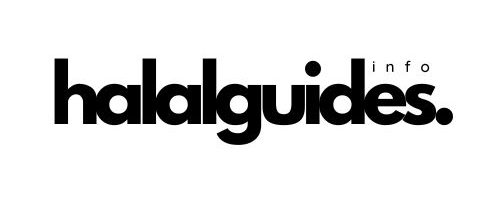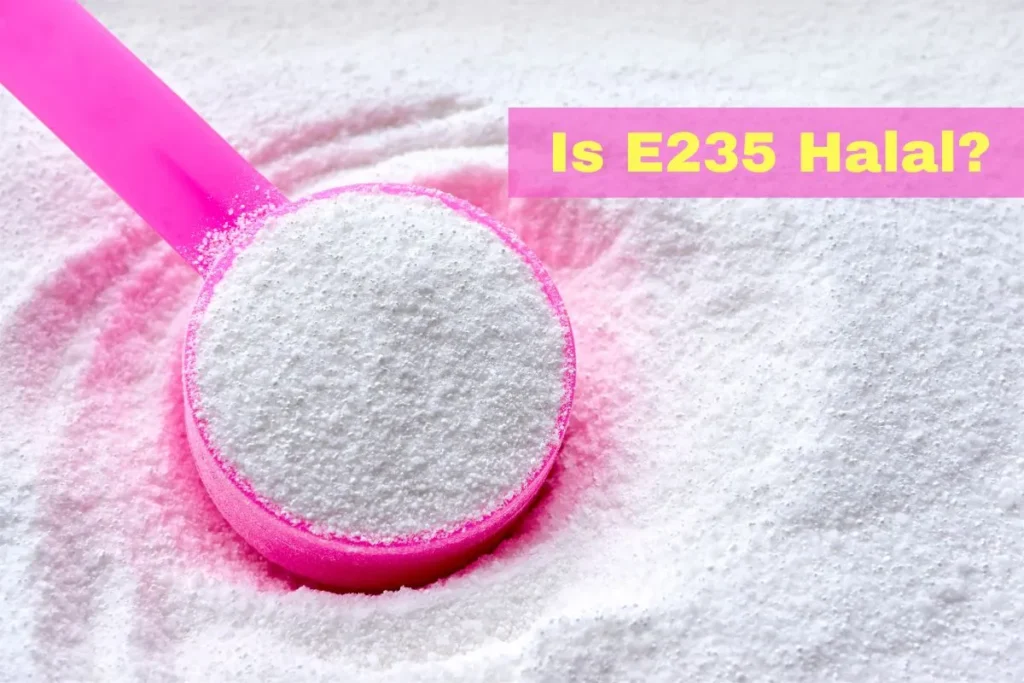Key Takeaways
In the expansive realm of food additives, E235 holds its unique spot. But what echoes in the minds of many is, is E235 Halal?
This inquiry isn’t just a whisper among the Muslim community, but a query reverberating through the alleys of every health-conscious individual.
As we saunter through the labyrinth of food chemistry, let’s unveil the enigma surrounding E235 and its Halal status.
| 📌 What is E235? E235, also known as Natamycin, is a natural antifungal agent derived from bacteria, helps preserve foods by preventing the growth of molds and yeasts. |
| 📌 What Is E235 Made From? Natamycin comes from the fermentation of Streptomyces natalensis bacteria. It’s then extracted and purified for use in food products. |
| 📌 Is E235 Halal or Haram? The halal status of E235 is doubtful due to uncertainties about ingredients used in the fermentation process, despite its non-animal origin. Strict adherents of halal principles might consider alternative products without E235. |
What is E235?
E235, known by its more scientific alias, Natamycin, is a naturally occurring antifungal agent. It’s not just a random ensemble of digits and letters, but a notable member of the food additive family.
Originating from the Streptomyces natalensis bacteria, E235 is the knight in shining armor for many food products, battling against the nefarious molds and yeasts.
So, how does E235 wave its magic wand? It’s all in the molecules! When E235 steps onto the food stage, it forms a protective layer, thwarting the advances of molds and yeasts with a molecular finesse.
And its prowess doesn’t just halt at being an antifungal maestro; it’s a preservative virtuoso, ensuring the longevity and freshness of food products.
What Is E235 Made From?
Now, what exactly is this substance? Natamycin is actually a naturally occurring antifungal agent produced by bacteria called Streptomyces natalensis.
It’s fascinating how microorganisms can produce substances that find a myriad of uses in our daily lives, right? Natamycin’s primary role is to protect foods from fungal growth, ensuring that your favorite cheese or yogurt remains fresh and safe to consume.
Now, let’s delve a bit deeper into how E235 is manufactured, shall we?
The process begins with the cultivation of the Streptomyces natalensis bacteria, which is quite the expert in producing Natamycin. Once our little microbial friends have produced a sufficient amount of Natamycin, it’s extracted and purified to meet the stringent food safety standards.
The resulting substance is a white, crystalline powder ready to be mixed into food products. And voila, that’s how E235 makes its way into our food!
Here’s a simplified depiction of the process:
| Step | Description |
|---|---|
| 1. Cultivation | The Streptomyces natalensis bacteria are cultivated under controlled conditions to promote growth. |
| 2. Production | The bacteria produce Natamycin as a part of their metabolic processes. |
| 3. Extraction | Natamycin is extracted from the culture using a solvent like ethanol. |
| 4. Purification | The extracted Natamycin is then purified to remove any impurities and meet food safety standards. |
| 5. Drying | The purified Natamycin is dried to obtain a white, crystalline powder. |
| 6. Mixing | This powder is then mixed into or sprayed onto food products to serve as an antifungal agent. |
Possible Side Effects
E235 or Pimaricin (Natamycin) may cause the following side effects:
- Allergic reactions: Some people may be allergic to natamycin, and allergic reactions may occur, including rash, hives, itching, difficulty breathing, tightness in the chest, and swelling of the mouth, face, lips, or tongue.
- Reduction of vitamin content: E235 may reduce the vitamin content in food products due to its oxidizing effect.
- Intolerance reactions: People who are intolerant towards natural sulfites should also avoid added sulfites, including E235.
- Gastrointestinal problems: A dose of 500 mg/kg/day of natamycin repeated over multiple days caused nausea, vomiting, and diarrhea in humans.
- Respiratory problems: E235 may cause respiratory problems in people with underlying asthma and allergic rhinitis.
Dosage and Administration
The Acceptable Daily Intake (ADI) level for E235 or Pimaricin (Natamycin) is not well-established. However, the ADI level for sulfites, including E235, is 0.7 milligrams per kilogram of body weight per day. The information provided by industry and available in the scientific literature is insufficient to establish a definitive ADI for sulfites.
Is E235 Halal or Haram?
The halal status of E235 Natamysin is syubhat (doubtful) because of the potential presence of ingredients or media used in the bacterial fermentation process, despite its non-animal origin. If you adhere strictly to halal principles, you might want to explore alternative products that do not include this ingredient.
Find out more:
Is E234 Halal or Haram?
Is E236 Halal or Haram?
Final Words
we’ve journeyed through the intriguing world of E235, or Natamycin, a remarkable natural antifungal agent. This guardian of freshness is born from the wonders of beneficial bacteria, Streptomyces natalensis, to protect our beloved food from mold and yeast invaders.
But the question on many minds is its halal status, which, I must say, remains shrouded in doubt. You see, there’s uncertainty about the ingredients involved in the fermentation process. For those of you who strictly follow halal principles, you might want to explore alternatives free from E235.
In the grand tapestry of food additives, knowledge is your most valuable compass. Understanding what goes into the products you consume empowers you to make choices that resonate with your dietary preferences. So, stay informed and savor your food with confidence!
Allahu A’lam (Allah Knows Best)
FAQ
What is the source of E235?
E235, also known as Natamycin or Pimaricin, is a natural antifungal agent that originates from a bacterium called Streptomyces natalensis. This microorganism undergoes a fermentation process, gifting the food industry with a potent preservative that combats the growth of fungi and yeast, thus helping to maintain food quality and prolong shelf life.
Is E235 safe for consumption?
Natamycin (E235) has been reviewed and approved by several reputable food safety authorities globally. It’s deemed safe for consumption within recommended limits by the European Food Safety Authority (EFSA) and is listed as a generally recognized safe (GRAS) ingredient for various food applications by other institutions.
The safety profile of E235 has contributed significantly to its widespread use as a food preservative, primarily against fungi.
What are some common food products that contain E235?
E235 finds its place in a plethora of food products owing to its antifungal prowess. Commonly, it’s used in dairy products like cheese, yogurt, and sour cream. Besides dairy, E235 is also utilized in processed meats and baked goods.
The extent of its use may vary based on the food safety regulations of different countries, extending to the outer surface of meat products, and in some regions, to bread, cakes, beverages, and even fruit juices.
What is the CAS number of E235?
The CAS (Chemical Abstracts Service) number for E235 (Natamycin) is 7681-93-8. This unique identifier assigned by the Chemical Abstracts Service is essential for the precise identification of chemicals across various databases and regulatory documents.
Is E235 banned in any country?
While Natamycin is approved and utilized in over 150 countries worldwide, there’s a hint of restriction in Iran, where it was detected in some commercial yogurt drinks and seemed to be part of the list of banned preservatives.
However, the extent and strictness of this ban are not fully elucidated. The global acceptance of E235 reflects its recognized safety and effectiveness as a food preservative, yet regional regulatory variations might dictate its use in certain food products.
- Is Pop Tarts Halal? What You Need to Know - February 18, 2024
- Are Graham Crackers Halal in Islam? - January 19, 2024
- Is Keebler Wheatables Halal? - January 18, 2024





